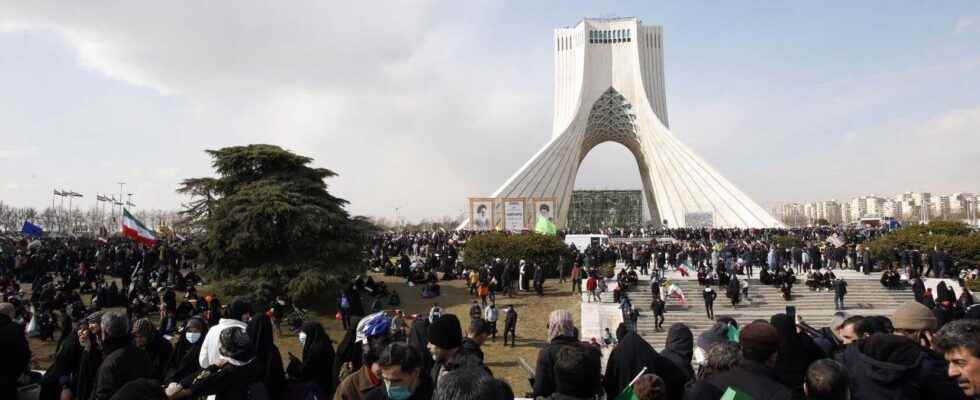The Iranian government has sent a signal of appeasement by releasing many detainees as part of a wide-ranging amnesty, leaving observers wondering about the strategy it will adopt in the coming months.
In recent days, prison doors have opened for some of those arrested since the beginning of the protest movement sparked by the death in custody of Mahsa Amini on September 16.
The precise number of releases has not been specified by the authorities, but the reformist daily Etemad gave an idea by publishing on Monday the front page of the photos of about fifty released personalities. They include filmmaker Mohammad Rasoulof, Franco-Iranian researcher Fariba Adelkhah, as well as activists Farhad Meysami, Saba Kordafshari, Mohammad Habibi and photographer Noushin Jafari. They had been preceded by the famous director Jafar Panahi, released a few days earlier.
“This amnesty is unprecedented in scope, as far as I remember,” Maziar Khosravi, a journalist imprisoned several times since 2009 and briefly during the recent protest, told AFP.
Uncertainty remains over the continuation of this series of releases, which began after protests became less frequent.
Politicians Faezeh Hashemi and Mostafa Tajzadeh, sociologist Saïd Madani, activists Mehdi Mahmoudian and Fatemeh Sepehri, as well as lawyers Amirsalar Davoudi and Mostafa Nili are among those who remain detained. Elaheh Mohammadi and Niloufar Hamedi, two journalists who helped publicize the Amini affair, are also still behind bars with a dozen of their colleagues.
The amnesty was decided in early February by the Supreme Leader, Ayatollah Ali Khamenei, to mark the 44e anniversary of the Islamic Republic, which was celebrated on Saturday. On this occasion, President Ebrahim Raisi announced a plan aimed at strengthening national unity. “Students and cultural, sports and media personalities who have been subject to restrictions due to illegal actions will be pardoned,” he promised.
In total, thousands of people have been arrested for their alleged involvement in the protest movement. Among those arrested, four were hanged while, according to the authorities, hundreds of others – notably demonstrators, but also members of the security forces – were killed.
In recent weeks, the power has somewhat relaxed some of the drastic restrictions on the Internet, even if access to Instagram and WhatsApp, the most used applications in Iran, remain blocked.
Towards long-term changes?
Such measures will “calm the atmosphere in the short term,” said Maziar Khosravi.
But “if the amnesty does not include all political prisoners and stops at this stage, it will not help to improve the situation” in the longer term, argues Ahmad Zeidabadi, a political scientist imprisoned several times during his long career. “Because there are many factors of discontent”, which “have led to the current situation, in particular the economic difficulties of the population, the tensions in international relations and the pressures concerning the wearing of the veil”, he explains to the AFP.
On this last question, “we will have to see how the authorities will react to women who will be less covered when the temperatures warm up”, adds Maziar Khosravi.
Moderate former President Hassan Rouhani hailed the amnesty, which will “reinforce national cohesion” and be “the starting point for repairing divisions” among Iranians. For its part, the ultra-conservative Javan newspaper sees this relaxation as a sign that “the sedition has come to an end”.
